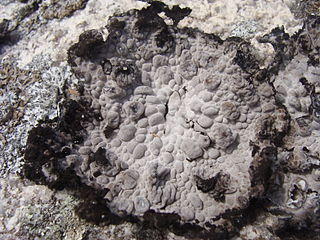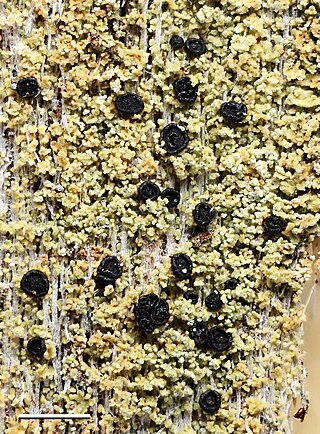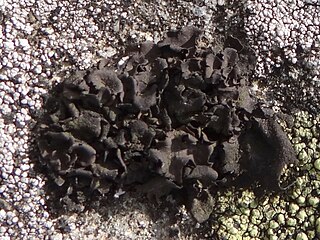
Lizard is the common name used for all squamate reptiles other than snakes, encompassing over 7,000 species, ranging across all continents except Antarctica, as well as most oceanic island chains. The grouping is paraphyletic as some lizards are more closely related to snakes than they are to other lizards. Lizards range in size from chameleons and geckos a few centimeters long to the 3-meter-long Komodo dragon.

Artiodactyls are mammals belonging to the order Artiodactyla. Typically, they are ungulates which bear weight equally on two of their five toes: the third and fourth, often in the form of a hoof. The other three toes are either present, absent, vestigial, or pointing posteriorly. By contrast, most perissodactyls bear weight on an odd number of the five toes. Another difference between the two is that many artiodactyls digest plant cellulose in one or more stomach chambers rather than in their intestine as perissodactyls do. The advent of molecular biology, along with new fossil discoveries, found that cetaceans fall within this taxonomic branch, being most closely related to hippopotamuses. Some modern taxonomists thus apply the name Cetartiodactyla to this group, while others opt to include cetaceans within the existing name of Artiodactyla. Some researchers use "even-toed ungulates" to exclude cetaceans and only include terrestrial artiodactyls, making the term paraphyletic in nature.

Starlings are small to medium-sized passerine birds in the family Sturnidae. The Sturnidae are named for the genus Sturnus, which in turn comes from the Latin word for starling, sturnus. The family contains 128 species which are divided into 36 genera. Many Asian species, particularly the larger ones, are called mynas, and many African species are known as glossy starlings because of their iridescent plumage. Starlings are native to Europe, Asia, and Africa, as well as northern Australia and the islands of the tropical Pacific. Several European and Asian species have been introduced to these areas, as well as North America, Hawaii, and New Zealand, where they generally compete for habitats with native birds and are considered to be invasive species. The starling species familiar to most people in Europe and North America is the common starling, and throughout much of Asia and the Pacific, the common myna is indeed common.

Feliformia is a suborder within the order Carnivora consisting of "cat-like" carnivorans, including cats, hyenas, mongooses, viverrids, and related taxa. Feliformia stands in contrast to the other suborder of Carnivora, Caniformia.

In biology, taxonomic rank is the relative level of a group of organisms in an ancestral or hereditary hierarchy. A common system of biological classification (taxonomy) consists of species, genus, family, order, class, phylum, kingdom, and domain. While older approaches to taxonomic classification were phenomenological, forming groups on the basis of similarities in appearance, organic structure and behaviour, methods based on genetic analysis have opened the road to cladistics.

Umbilicaria vellea is a species of lichen in the genus Umbilicaria. It is sometimes called navel lichen. It is found in North America and Europe in alpine and arctic habitats. It is similar to the species Umbilicaria americana, which has a more southern distribution.

Lasallia is a genus of lichenized fungi in the family Umbilicariaceae.

Edible lichens are lichens that have a cultural history of use as a food. Although almost all lichen are edible, not all have a cultural history of usage as an edible lichen. Often lichens are merely famine foods eaten in times of dire needs, but in some cultures lichens are a staple food or even a delicacy.

The Umbilicariales are an order of lichenized fungi in the subclass Umbilicariomycetidae, class Lecanoromycetes. It contains five families: Elixiaceae, Fuscideaceae, Ophioparmaceae, Ropalosporaceae, and Umbilicariaceae. Umbilicariales was proposed as a new order in 2007, while the subclass Umbilicariomycetidae was proposed in 2013.

Lasallia pustulata is a species of lichen in the Umbilicariaceae family of fungi. It is the type species of its genus Lasallia.
Józef Motyka was a Polish botanist and lichenologist.

Lasallia papulosa is an umbilicate lichen. It is in the family Umbilicariaceae.

Xylopsora is a genus of lichenized fungi, belonging to the family Umbilicariaceae.

Umbilicaria polyphylla, commonly known as petaled rock tripe, is a widely distributed species of saxicolous lichen in the family Umbilicariaceae. It was first described by Carl Linnaeus in his 1753 work Species Plantarum as Lichen polyphyllus. German botanist Johann Christian Gottlob Baumgarten transferred it to the genus Umbilicaria in 1790. The lichen has a dark brown to black thallus that measures 2–6 cm (0.8–2.4 in) in diameter. The upper surface is smooth, while the lower surface is sooty black. It grows on exposed rocks, typically in arctic-alpine habitats.

Umbilicaria deusta, commonly known as peppered rock tripe, is a widely distributed species of saxicolous lichen in the family Umbilicariaceae. It was first described by Carl Linnaeus in his 1753 work Species Plantarum as Lichen polyphyllus. German botanist Johann Christian Gottlob Baumgarten transferred it to the genus Umbilicaria in 1790. The lichen has a dark brown to nearly black thallus that typically measures 1–5 cm (0.4–2.0 in) in diameter. The upper surface is covered with tiny black dots that are granular isidia; the lower surface is the same colour as the upper surface, and is either smooth or covereds with dimples. It grows on exposed boulders and rocky outcrops.
George Albert Llano, born Jorge Alberto Cecilio Perez y Llano, was a Cuban-born American polar explorer and botanist who specialized in the field of lichenology. He was an expert in the Umbilicariaceae.
Umbilicaria maculata is a species of saxicolous (rock-dwelling) umbilicate lichen in the family Umbilicariaceae. It is found in high-altitude alpine locations in Poland and France.

Umbilicaria muhlenbergii, commonly known as plated rock tripe, is a species of saxicolous (rock-dwelling, umbilicate lichen in the family Umbilicariaceae.
Umbilicaria murihikuana is a rare species of saxicolous (rock-dwelling) lichen in the family Umbilicariaceae. It is endemic to New Zealand, where it occurs in mountainous, high-rainfall areas of Otago and Southland. It grows on exposed rocks and boulders at altitudes between 1,000 and 1,500 m, in subalpine to alpine habitats.













